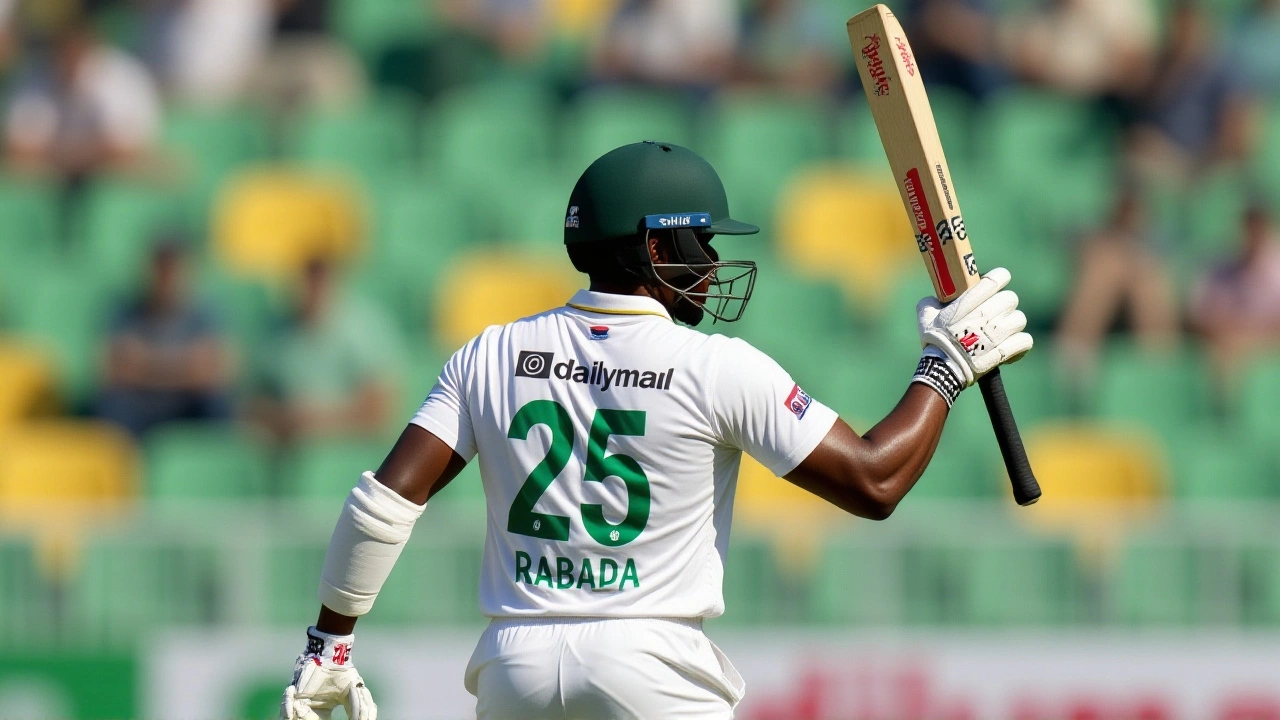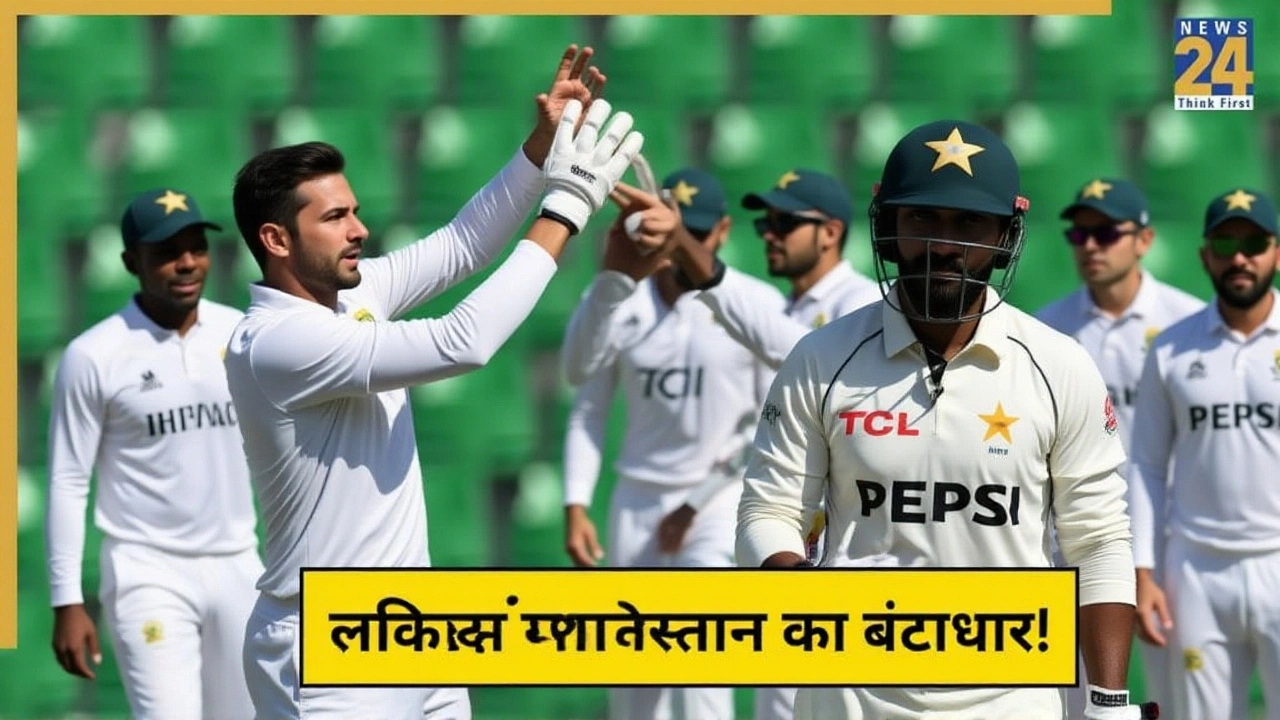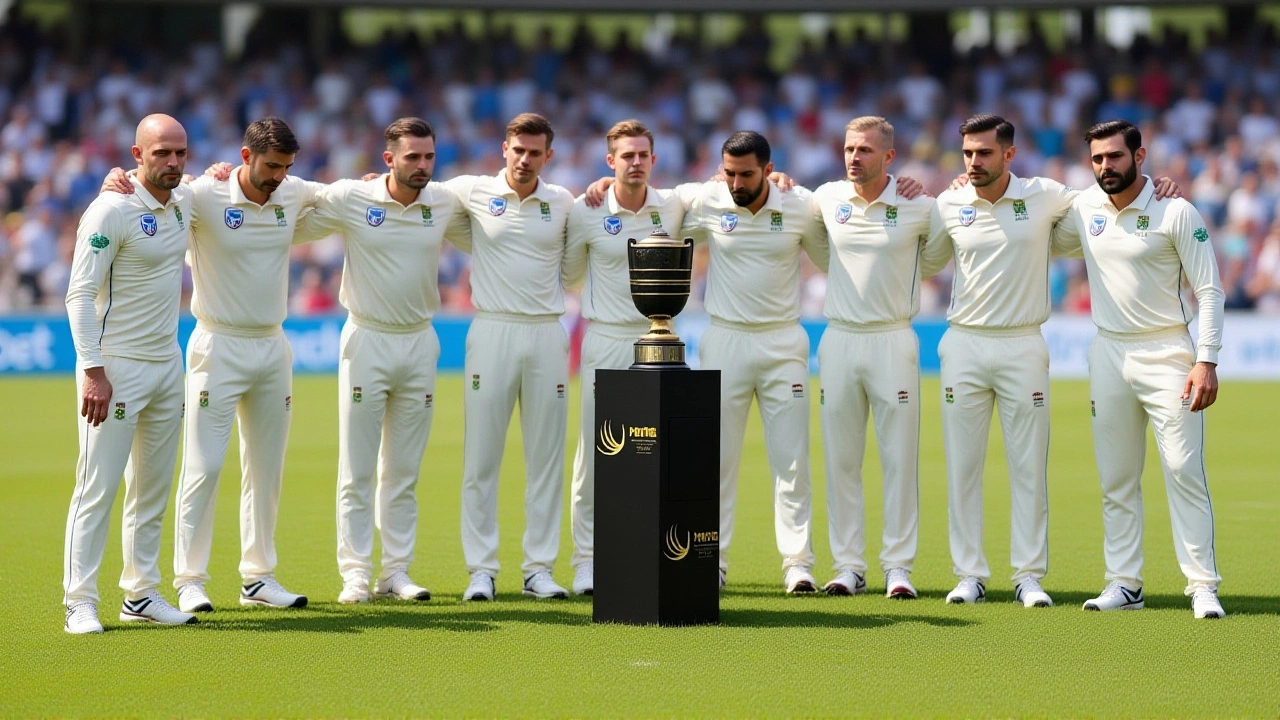When Senuran Muthusamy stepped up to the crease on Day 2 of the second Test in Guwahati, few expected the South African all-rounder of Indian origin to deliver the defining performance of the series. But by the time he was dismissed for 109 off 206 balls — 10 fours, two sixes, and a quiet defiance that silenced the home crowd — he had not only scored his maiden Test century but also shifted the momentum of the match entirely. The innings came at the Barsapara Stadium, the first-ever Test match held at this venue in Guwahati, and it was the centerpiece of a dominant South Africa national cricket team performance that has left India reeling in the India vs South Africa 2025 Test seriesGuwahati.
History Made in Guwahati
The second Test began on November 21, 2025, just three days after South Africa’s 30-run victory in the first Test at Eden Gardens in Kolkata. That match, played from November 14–18, was already historic: it was the first time in 148 years of Test cricket that tea was taken before lunch. The unusual scheduling quirk — caused by a delayed start due to persistent fog — set the tone for a series full of surprises. South Africa won the toss in both Tests and chose to bat, a decision that has paid off spectacularly. In Kolkata, they posted 287 and 247, while India managed just 264 and 220. Simon Harmer took 8 wickets across both innings, earning Player of the Match honors, and Temba Bavuma was the only South African to pass 50 in that low-scoring thriller.
Now, in Guwahati, the script has changed. South Africa’s first innings of 489 in 151.1 overs — the longest by any team in a Test innings this year — was anchored by Muthusamy’s century. He shared key partnerships with Tony de Zorzi (82), Kyle Verreynne (76), and Marco Jansen (67), turning the match into a masterclass in patience and precision. "It wasn’t about hitting boundaries," Muthusamy said after play. "It was about outlasting them. They had the crowd, the pitch, the momentum. We just had to outlast the noise."
India’s Struggles and Leadership Shifts
For India, the series has been a rollercoaster of missed opportunities and injury setbacks. Captain Shubman Gill, who led India in the first Test, was ruled out of the ODI series after suffering a neck injury during the Kolkata match. In his absence, Rishabh Pant captained India in his first-ever Test leadership role — a role he embraced with fiery energy, though his team’s batting collapsed under pressure. The decision to promote Dhruv Jurel to number six, fresh off his maiden Test ton against the West Indies, looked promising — until he was bowled by Jansen for 12 on Day 1.
Meanwhile, KL Rahul has been named captain for the upcoming ODI series, starting November 30 in Ranchi. His appointment came as no surprise after his calm 78 in Kolkata and his leadership in India’s limited-overs setup. But the Test side remains in disarray. Former spinner Ravichandran Ashwin didn’t mince words: "India will have to go through some major workload to get close to winning this Test. The Proteas batted 151 overs — that’s not just skill, that’s mental toughness."

ODI Squad: New Faces, Old Questions
The BCCI announced India’s ODI squad on November 23, 2025, and it was a mix of proven stars and fresh blood. Rohit Sharma and Yashasvi Jaiswal open, with Ruturaj Gaikwad making a long-awaited return after a year out due to form and fitness concerns. Virat Kohli remains in the squad, but his role is now more mentor than anchor. The spin department — Washington Sundar, Ravindra Jadeja, and Kuldeep Yadav — is as strong as ever. But the pace attack raises eyebrows: Harshit Rana, Prasidh Krishna, and Arshdeep Singh are all capable, yet none have consistently delivered under pressure in overseas conditions. Jasprit Bumrah and Mohammed Siraj are absent, both recovering from injuries sustained in the Asia Cup.
One of the most intriguing selections is Nitish Kumar Reddy, the pace-bowling all-rounder from Karnataka. He’s a raw talent — 6’4", capable of 140 kph, and a handy lower-order bat. But he’s played just 12 first-class matches. Is he a future star or a gamble?
What’s at Stake?
South Africa now leads the two-match Test series 1-0 and holds 12 World Test Championship points to India’s 0. A win in Guwahati would seal their qualification for the 2027 WTC Final. For India, it’s about redemption — and survival. The pressure is mounting on the batting lineup, which has averaged just 218 in the two Tests. The absence of Gill and the inconsistent form of Jaiswal (who scored 175 in the West Indies but has managed just 32 and 14 here) have exposed a dangerous middle-order gap.
Meanwhile, Muthusamy’s century carries deeper symbolism. Born in Durban to Tamil parents who migrated from Tamil Nadu, he’s the latest in a long line of Indian-origin cricketers making their mark abroad — from Hashim Amla to Keshav Maharaj. "He’s not just playing for South Africa," said former Indian selector Navjot Singh Sidhu on a live broadcast. "He’s playing for every kid in India who was told they weren’t good enough to make it here. He’s showing them the door is open — just not necessarily on the side you expected."

What’s Next?
Day 3 of the Guwahati Test begins with India at 98 for 3 in their second innings, still 293 runs behind. If they can survive the day, they’ll have a fighting chance on Day 4. But with Marco Jansen and Tabraiz Shamsi firing, and Muthusamy ready to bowl his off-spin, the odds are steep.
The ODI series begins November 30 in Ranchi, with India desperate to salvage pride. But with Bumrah and Siraj sidelined, and Kohli nearing 37, questions linger about the team’s long-term direction. Is this a transitional phase — or a crisis?
Frequently Asked Questions
Why is Senuran Muthusamy’s century significant beyond the scorecard?
Muthusamy’s 109 is not just his first Test century — it’s a milestone for Indian-origin players in international cricket. Born to Tamil parents in South Africa, he represents a growing demographic of diaspora athletes excelling abroad. His innings came against India on home soil, adding emotional weight. He’s the third Indian-origin player to score a Test century for South Africa, after Amla and Maharaj, and his calm demeanor under pressure has drawn comparisons to Graeme Pollock.
What makes the Barsapara Stadium’s debut as a Test venue special?
Guwahati’s Barsapara Stadium became the 57th venue in India to host a Test match, and the first in Assam. The pitch offered early assistance to seamers but flattened out by Day 2, favoring spinners — a trend South Africa exploited brilliantly. The crowd of 32,000 over three days set a new record for a Test in Northeast India, signaling the region’s growing cricketing importance. The BCCI plans to host at least one more Test here by 2027.
Why are Bumrah and Siraj missing from India’s ODI squad?
Both fast bowlers are recovering from injuries sustained during the 2025 Asia Cup. Bumrah has a recurring lower back issue, while Siraj is managing a hamstring strain. The BCCI is prioritizing their long-term fitness ahead of the 2026 T20 World Cup. Their absence has forced the team to rely on younger pacers, raising concerns about depth in high-pressure chase situations.
How has Shubman Gill’s injury impacted India’s Test future?
Gill’s absence has exposed India’s over-reliance on him as both opener and captain. His 175 in the West Indies was his seventh Test century — the most by any Indian under 25. Without him, the top order has collapsed twice in two Tests. Rishabh Pant, though a capable leader, lacks consistency as a batsman in Test conditions. The BCCI may consider promoting Jaiswal to captaincy in future Tests if Gill’s recovery takes longer than expected.
What does South Africa’s 489-run first innings reveal about their strategy?
It shows a deliberate shift from their traditional aggressive style to a more patient, accumulative approach — mirroring Australia’s 2023 Ashes strategy. Captain Bavuma emphasized "occupying the crease" over quick runs. Muthusamy’s 206-ball century, with only 12 boundaries, exemplifies this. The Proteas now average 387 per innings in 2025 — the highest among top-eight Test nations — suggesting they’ve found a formula to dominate in subcontinental conditions.
Is this series a turning point for India’s Test rebuilding phase?
Absolutely. With Gill, Pant, and Jadeja as the only survivors from India’s 2019 Test squad, the team is in transition. The failure to convert 489 into a win, the lack of a consistent #3 batsman, and the absence of Bumrah highlight structural gaps. If India loses this Test, it’ll be their first 2-0 Test series defeat at home since 2012. The selectors may look to promote Riyan Parag or Yashasvi Jaiswal to lead the next generation — but only if they perform under pressure.
